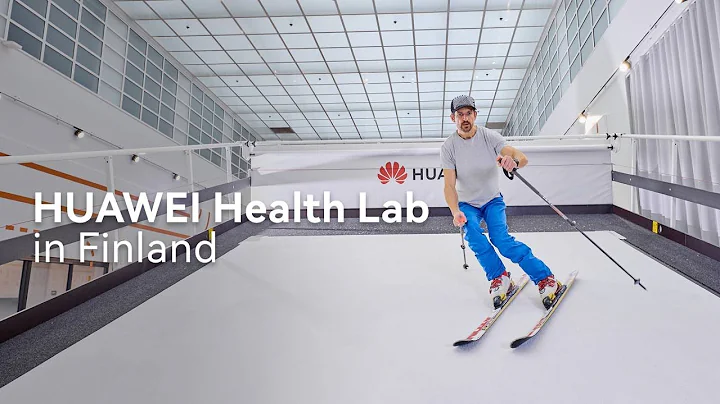Follow Huipao to help you run as light as a feather and without injury

How do you evaluate your running form? There are many ways.
The laboratory's high-precision three-dimensional motion capture technology , ordinary two-dimensional video shooting technology, wearable technologies such as Garmin Mung Bean Sprout, Gochi POD running dynamic sensor, Huawei Running Elf, and even the naked eyes of running coaches can be used. Conduct running form evaluation.
For mass runners, they don’t need to use complicated tools, they can just use a stopwatch or mobile phone running APP to measure.
The simplest and most practical parameters for evaluating running posture are actually two:
Cadence and stride length, and for runners of different levels, running posture evaluation focuses on different things.
For junior runners, cadence is the most practical parameter to evaluate running posture;
For mature runners, stride length is an important parameter to evaluate running posture.

Today, we will take a look:
How do junior runners develop a good stride frequency?
How do advanced runners develop a good stride length.

Cadence is the key to forming a correct and reasonable running posture
Cadence refers to the number of times your foot hits the ground per minute while running;
Stride refers to the distance between two adjacent steps;
Cadence multiplied by stride length equals speed. At the same speed, you can use a slow cadence with a long stride, or a fast cadence with a small stride.
When the speed is not fast enough, a fast cadence with a small stride is better than a slow cadence with a large stride, that is, a relatively fast cadence is more suitable for the public. How fast the cadence should be? It is generally believed that the ideal should be 170-170 180 steps/minute.
Why is it more advantageous to use a fast cadence and small strides when jogging?
 . Fast cadence reduces the flying height
. Fast cadence reduces the flying height
What impact does fast cadence have on running? The team of Associate Professor Dai Jiansong from the School of Sports Health of Nanjing Institute of Sport, author of the best-selling book " Injury-free Running Method ", conducted in-depth research and obtained important scientific evidence by measuring the correlation between the cadence of mass runners and other running posture data.
When the cadence is slow and the stride length is large, the height in the air will increase significantly. As can be seen from Figure 1, at 8 speeds, slow pacers pacers have significantly higher heights in the air than those with fast paces.
Running is an exercise in which the feet alternately move forward, the center of gravity of the body continuously fluctuates, and the air and the ground alternate. However, the essence of running is to obtain greater horizontal speed. When the air is too high, it will actually affect the horizontal speed, because you need constantly overcomes gravity to do work , and the excessive fluctuation of the center of gravity has to consume more energy in the vertical direction rather than the horizontal direction, which is a thankless way of running.
Figure 1 Comparison of airborne heights of mass runners with different synchronization frequencies (cm)

 . Fast cadence shortens the touchdown time
. Fast cadence shortens the touchdown time
From Figure 2, the landing time is shortened as the speed increases, and the landing time of those with faster cadence is obviously shorter. For those with a slow stride frequency, a shorter ground contact time can bring into play the muscle's rapid stretching-shortening cycle (SSC), thereby making full use of the elastic potential energy of other elastic tissues such as muscles and fascia, and reducing energy consumption losses. Longer ground contact time often means that a lot of elastic potential energy is released in the form of heat energy, which reduces running efficiency.
Figure 2 Comparison of landing time of public running with different synchronization frequencies (milliseconds)

 . Fast cadence reduces braking
. Fast cadence reduces braking
Slow cadence In addition to the problem of effort caused by increased altitude, we also need to consider another important factor brought by slow cadence The effect is that the overall force on the human body will also be increased during the landing buffering and off-ground pushing stages. We use the impulse to measure it. The so-called impulse is the force multiplied by the action time, that is, the area under the force curve.
The continuous action of horizontal and vertical ground reaction forces is measured by impulse (force × time)

From the diagram below, we can clearly see that when landing, since the landing point is usually in front of the center of gravity, the landing will inevitably When braking, it depends on the degree and size of the brake. At this time, the person will give the ground a forward and downward force. Of course, the ground will give the human body a diagonal reaction force to the rear. This force can be decomposed into vertical components. and horizontal component force (the direction of the horizontal component force is opposite to the direction of movement, so it is braking), in short, they all give the human body a braking effect, and during the pedaling stage, at this time, the combined external force of the horizontal and vertical component forces is facing the forward direction, so It becomes a propulsive force.
The braking impulse is generated in the braking phase, and the propulsion impulse is generated in the pushing and extending phase. The advantage of using impulse is that it can express the action time of force, that is, it can express the comprehensive effect of force loading on the human body.

It can be seen from Figure 3 that the person with a slower cadence has a farther distance from the center of gravity due to the landing position, which makes the braking force more obvious, resulting in a significantly greater braking force impulse than those with a faster cadence. Runners with a faster pace do not have time to extend their legs forward, so the landing point is closer to the center of gravity. When landing, the knee joint bends more obviously. In this way, on the one hand, the lower limbs appear S-shaped, which is conducive to buffering the ground impact force, while straightening The legs cannot cushion the impact of the ground. On the one hand, because the landing point is close to the center, braking is also reduced.
Figure 3 Landing position (cm) of mass runners with different synchronization frequencies

Figure 4 Braking impulse comparison of mass runners with different synchronization frequencies (N▪s/BW)

Therefore, in summary, maintain 170-180 steps/min for the mass public For runners, having tangible biomechanical advantages is the key to evaluating the running form of junior and intermediate runners.
The cadence of mature runners can easily reach around 180, while the cadence of beginner runners is often only 150-160 steps/min when they first start running. It is not easy to reach 170-180 steps/min, and it requires a period of training. Implemented step by step.


Why can’t the cadence of junior runners
increase at the beginning?
Increasing cadence seems very simple. It seems that it can be achieved by speeding up the rhythm of movement. But why do some junior and intermediate runners still have difficulty keeping up with the rhythm and feel tired even if they turn on the metronome of their watch or mobile phone to run?
As you can see from the picture below, cadence is related to fast muscle and nerve coordination. It does not mean that you can go fast if you want to.
If the muscles do not have certain rapid contraction strength and the movement coordination and proficiency are not good, it is really difficult for the cadence to reach 170-180 steps/minute.
So there is nothing wrong with humans being born to run, but running with correct and reasonable posture are two different things. At least it is difficult for beginner runners to reach the ideal cadence. In essence, it is mainly due to the lack of strength in the muscles and movements of beginner runners. Caused by poor coordination.
Factors affecting stride frequency


Mature runners
Improving running posture mainly depends on stride length
Research Center (Research Center) on the International Association of Athletics Federations (IAAF) official website You can view the 2017 London World Athletics Championships men's marathon competition Technical analysis report, through this report, we can understand the running technical characteristics of the top marathon athletes.

The pace frequency of the top 8 athletes in the London World Championships is 183 steps/minute. Although their average pace can reach less than 3 minutes, In fact, the cadence is not as fast as we imagined. Obviously, elite runners are good at stride length, and their average stride length reaches 1.66 meters. This means that the stride length and height of elite athletes are basically close. This may be the difference between mass runners and elite runners. The main difference.
When the cadence is similar to that of mass runners, elite runners can show a longer and stretched running posture. In professional terms, they can fully lift their legs and push back.
Although the cadence of mass players can basically be close to that of elite players, the gap between them is larger.

Analysis of cadence of international elite players

Analysis of strides of international elite players

When the results of international elite players are all at the 210 level, the average cadence It’s only about 183, which is basically the same as our country’s players with scores between 210 and 240 (the cadence of domestic elite players is around 185), or even lower, and the average stride length reaches 1.65 meters, which is slightly higher than that of our country’s players within 230. (average 1.59 meters), significantly higher than our country's players between 230-240 meters (average 1.45 meters), which further shows that in the competition between top players, stride frequency is not the main factor, and the stride length gap is the main reason for the difference in performance.
It can even be said that the cadence of elite runners is not much different from that of mass mature runners. The main reason why elite runners are significantly stronger than mass runners is their large stride length.
We further analyzed the differences in cadence and stride length between 33 domestic players under 230 and 91 players between 230-240. As can be seen from the table below, there is no difference in cadence between the two types of players, but there is a statistical difference in stride length. The stride length of players within 230 meters reaches 1.59 meters, while the stride length of players between 230 and 240 meters is 1.45 meters. In other words, the faster the player, the better the performance and the longer the stride.
Comparison of cadence and stride length of top domestic elite players

Comparison of cadence and stride length of top domestic elite players


What is the key to improving stride length?
For elite runners with a marathon score of less than 330, the usual running pace can be around 500. At this time, blindly emphasizing increasing the cadence to increase speed is not the right choice, because the problem caused by too high a cadence is the following. If you don't pedal enough, that is, if you don't exert enough force, you will start to touch the ground next time, which will lead to uneconomical effort.
For faster elite runners, they should train the ability to increase their stride length while maintaining a cadence of 180-190 steps/minute, which will be of great benefit to them in improving their running skills.
When the speed is faster, the hip-striking-folding integration technology is reflected, because only in this way can the stride length be increased.
The main difference in running posture between elite athletes and mass runners

As can be seen from the previous article, when the stride frequency of elite athletes is not much different from that of mass runners, the main difference is that the athletes have large strides, and stride length is related to body flexibility. Strength is closely related, so the essence behind running posture is physical ability. All running posture training that is not based on strengthening physical ability is an ineffective and useless imitation.
Specifically speaking of stride length, to form a good stride length rather than deliberately taking long steps to increase the stride length requires the integration of hip joint flexibility training, lower limb strength and running posture technical training.
Flexibility and strength training are the foundation, and technical training is the only way to form a good stride pattern. Finally, repeated running training continues to strengthen the movement pattern.
For mature runners who want to further improve their running skills, strengthening their ability and improving their stride is the key.
Three steps to increase stride length


Summary
Running, as a specialized skill, also requires learning and repeated training to finally form a good running posture. This kind of learning and training depends on three aspects:
The first is physical fitness training. Physical flexibility and muscle strength can be significantly improved through physical fitness training, and both cadence and stride length require strong support from the physical ability;
The second is specialized running technical training. Through professional running technical training, it can help The third is to form correct movement patterns and improve running economy;
The third is to run repeatedly. Only through hundreds of hours of running can good movement automation and movement stereotypes be formed.
For junior runners, the key to practicing good running form is to practice cadence. For advanced runners, the key to practicing good running form is to practice stride length. They may seem different, but they lead to the same goal. The essence is to practice ability. When ability is achieved, natural running posture will be fine. , this is what is called natural success.
Three types of training are needed to form a good running posture






















